This article we will look at turning and milling stock, and what to do with it. We will also include the following:
What is stock
What is CNC and some popular CNC processes
How we at Prototype Finder work with turning and milling
Turning and milling differences
Milling and turning similarities
Which is best for your next application
To begin, let us start with understanding exactly what we mean by “stock”.
When mentioning “stock” in CNC machining, it can be otherwise known as a “blank” or a “billet”, we are referring to the piece of material (usually metal, plastic or wood), that is loaded into the machine. Your stock material after machining will become the workpiece that you need. Stock materials can come in different shapes and materials. For example, the material may come in the form of plates or blocks (flat, rectangular) for CNC milling and often castings. While rods are used in CNC turning (cylindrical).
Both can come in many varieties of sizes. It should also be noted that is a generalization and in some circumstances round bar stock may be used for a milling project and rectangular billet may be used for a turning project. The stock material will be made from a specific material such as Aluminium, Steel, or plastic amongst many others. All materials that we use come from verified suppliers and are also tested to ensure they are the material requested.
“Stock” refers to the raw material that is loaded into the machine. CNC milling uses plates, billets, or castings while CNC turning uses rods. These materials are often plastic or metal and often wood for furniture which is also CNC milled and turned.
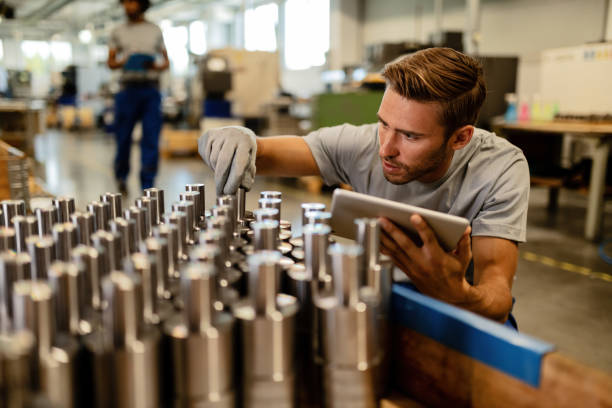
Turning is a common machining process and can be performed on a manual or a CNC lathe. It is a subtractive process. Turning cuts away excess material which results in your final product. In the turning process the workpiece or stock material is clamped in a chuck or other work holding mechanism. The stock material rotates and the cutting tool which is fixed in a tool post is fed into the workpiece in a controlled manner. The computer sends information which controls the spindle speed and feed speed and direction of the cutting tool. In the turning process it is the material that turns.
On a manual lathe, the machine is controlled by the technician via handwheels and levers. A manual lathe requires a highly skilled technician to produce a complex part. On both manual and CNC machines we hold the part in a rotating spindle, clamped into place with collets or in a 3 or 4 jaw chuck, this can be manual clamping or using hydraulics. Since the material is spinning, the shape ends up with a revolved profile. So, a sphere, taper, cylinder, or thread for example is possible to machine on a lathe. We control this machine with a computer which results in a complex precision turned component. It is possible to turn complex thread forms with great accuracy, very quickly compared to the manual process used in years gone by.
CNC turning involves a material placed into a CNC turning machine – called a CNC lathe – and spun in a rotating spindle. While a cutting tool, cuts away at the workpiece to achieve its desired shape. These revolved creations can be very complex with a high degree of accuracy. CNC lathes can also have “live” tooling and milling can be performed on a lathe. This configuration of machine would be called a CNC Mill Turn machine. On a CNC Mill turn machine it is possible to get turned parts with milling operations performed on one machine without the need for a second set up.
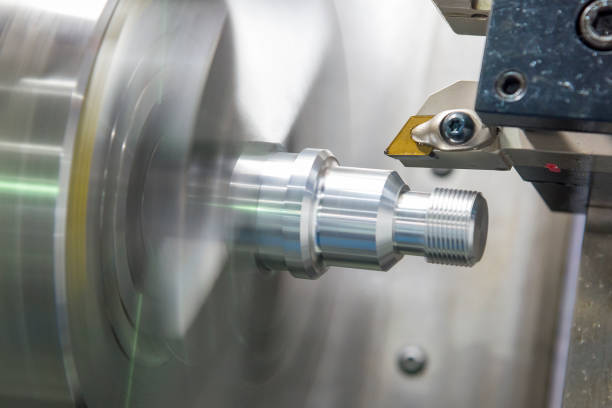
We at Prototype Finder are a manufacturing company. Specializing in prototype development and manufacturing. Not only this, but we also hold core competency in injection molding and CNC machining. We have worked with turning and milling stock for many years. Our founder learned about manual and CNC machining as an apprentice with the UK Ministry of Defence in the 1980’s. Michael takes an interest in all projects and often gives useful feedback to help improve part design for machining. Do you need to work with one of the best professional turning manufacturers on the market? Or do you need expertise help for milling your latest parts? Either way, do not hesitate to request a quote or contact us and we will do our best to assist you in any way we can.
So, what is milling? CNC milling has many different machine combinations and configurations, but they are often classified as either vertical milling or horizontal milling. In general think of it as a block of material carved into a desired shape by a series of rotating cutting tools. We hold down the part onto the machine bed by vice, clamps or dedicated fixtures. The cutting tools are like drills which rotate at very high speeds but differ in the way they cut. Drills feed along their rotational axis to create a round hole.
Milling cutters cut on the end to create flat surfaces or on the outside diameter to create flat or contoured surfaces. Milling cutters come in many shapes and sizes and can create a broad range of shapes. Imagine a sculptor carving a statue from a marble block, a multi axis CNC Milling machine can produce a similar shape much faster. Of course, the milling machine differs in that it uses a rotating cutting action rather than a chisel cutting action. Now you get the idea and can understand what milled components are. Milling machines can work with a variety of materials. From wood, metal, composites, and many others, and if set up properly can produce accurate identical parts in the most cost-effective way.
CNC milling involves a stationary or semi stationary block of material. This gets carved away by a rotating cutting tool, to the untrained eye it looks like a drill. These tools can produce flat or sculptured surfaces and parts and are used only on milling machines.
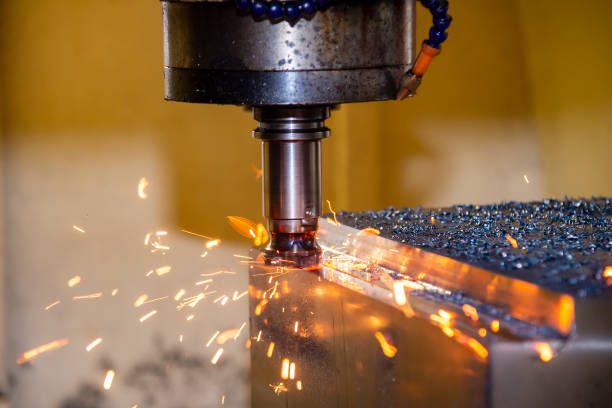
As you might have noticed, there are some similarities between the two. Whether you are making a milling or turning component. Let’s look in more detail what those similarities are:
Process – Both of these use a controlled process. One that removes unwanted material from the original piece, this is referred to as a subtractive process. They both chip away at waste material with the turning or milling machine. But as we have seen, the methods of achieving these processes differ.
Tech – They both use the latest in Computer Numerical Control technology (CNC technology). Engineers program the machines using CAD software. The programs send detailed information to stepper motors on the spindles. The program also controls all aspects of the machine, including the spindle speed and direction. It can also turn on and off the coolant sources. The program can also control automatic pallet changes and much more, even automated probe measuring and automated cutting tool measurement. This requires less supervision during operations and lessons human error. Making the process faster, reliable, and providing higher quality and producing far more complex shapes than possible on manual machines.
Material – These CNC machining processes are suitable for a wide variety of metals. Ranging from copper, brass, aluminum, plastic, steel and titanium. Including a range of different thermoplastics too and even wood. They do not include materials like rubber or silicone. As these are too soft for such a process.
Cutting Fluid – The act of turning or milling of metals can generate a lot of heat. So, both processes need the use of cutting fluid to mitigate this issue. We use the cutting fluid to lubricate the cutting and to flush away the chips from the cutting area. Recutting of chips can cause excessive wear of cutting tools and early failure of the cutting tool. The cutting of plastics and wood often use compressed air in place of cutting fluids to evacuate the chips.
Both processes have some similarities. They are both CNC machines. They both are subtractive processes, and they both use cutting fluid to reduce heat.
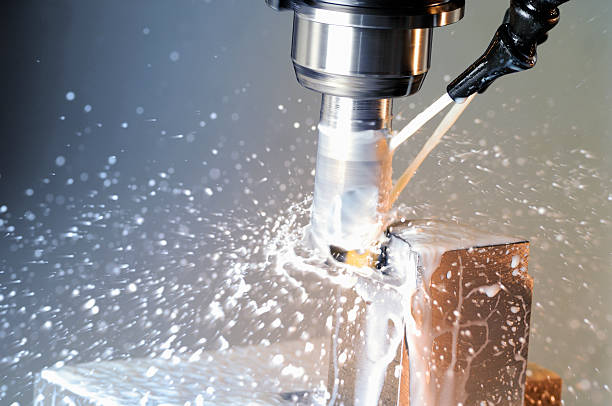
Now let’s look at the fundamental differences between the two. Looking at more details below:
Method – The methods for cutting are different. During turning, the workpiece rotates and is cut by a fixed cutting tool being fed into it. For milling the workpiece can be considered stationary and the cutting operation is performed by a rotating tool that is fed into the workpiece in a controlled manner to achieve the desired shape.
Results – Turning is for when you desire a product that is conical or cylindrical in shape with a revolved profile. Milling is for when you desire a flat or sculpted product or anything other than a revolved profile part.
Machine – We use separate machines depending on which method you are looking to use. For turning, we use a machine called a lathe. For milling, we use a milling machine. These machines come in many configurations and sizes. They are designed to make parts less than a gram in weight up to many thousands of KG’s. They are often referred to as machining centres or turning centres. Modern CNC machines are fully guarded for safety purposes and can look like a big box with doors on and computer control panel.
Tools – Different tools are also used during each process. For turning, we use a single point turning tool (SPTT). Whereas in milling we mostly use a multi-point cutting tool (milling cutter).
Contact – During turning, the piece of material spins in a constant motion. During this time the cutting tool stays in continuous contact with the piece. This can produce fragmented, discontinuous, or continuous chips of waste. In milling, the tool cuts at different intervals. Leaving discontinuous waste chips.
Turning and milling differ in some regards too. Differing in results, machines used, tools and contact with the material.
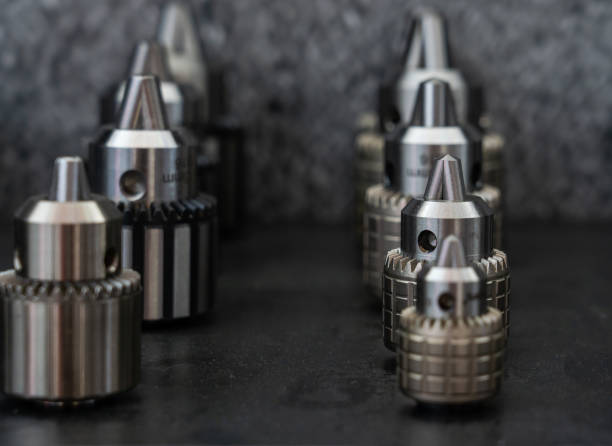
The decision to use either milling or turning will in the end depend on your part design and its features. For those who need flat, large, or square parts the decision is most generally going to be with milling. Cylindrical parts will often need turning instead. Sometimes a product may need both milling and turning to achieve its required shape. For help with producing your CNC machined product, you can contact us or send us a request for quote. We here at Prototype Finder will respond as fast as possible, after viewing your 3d and 2d drawings in detail.
Today we learned about turning and milling stock. We examined what these two processes are. Then we explained what Prototype Finder can do for you with these processes. We looked at how they are both similar and different at the same time. Then learned which would be the best choice for you going forward.
Do you need an experienced manufacturer who can assist you to make your product? Look no further, we at Prototype Finder can help. We are a machining and injection molding and a prototype manufacturing company. We have worked with both milling and turning products for many years and we are capable of producing both low and high-volume production parts. At the beginning of a project, we often need only a single part, we will also produce as little as one part for you if required.
Is your next project a milling or a turning one? Uncertain what process you need for your next application? If you need help from experienced professionals then you can contact us or request a quote and we will do our best.
If you enjoyed this article, see our other blog topics. Ranging from many kinds of metals, plastics, and industries. Check out Polyamide vs Nylon to see which one is the best of the two. Or read Galvanized Steel vs Aluminum to find out which metal is the top dog. Aluminum Parts will show you how we make these incredible products. These and many more are on our Blog page.
Categories: BLOG
Tags:
Leave a Reply

Recent Posts
Comparative Analysis of Titanium and Aluminum in Manufacturing Blow Molding 101: What you Must Know Prototype Fabrication: The Critical Breakdown CNC 101: Everything you Need to Know about this Manufacturing Process Turning and Milling Stock: Everything you Must Know Overmolding: The Best Choice for your Next Product?Categories
Comparative Analysis of Titanium and Aluminum in Manufacturing Blow Molding 101: What you Must Know Prototype Fabrication: The Critical Breakdown 3D Printing Materials: 5 Ultimate Choices Overmolding: The Best Choice for your Next Product? Galvanized Steel vs Stainless Steel: Which is the Best MetalRelated Posts